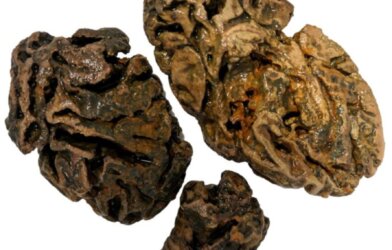Tai chi combines deep breathing and slow and gentle movements. The meditative mind-body technique has been used for over 1,000 years. New research shows that stroke recovery can be boosted by the ancient martial art, and may even be done while sitting down!
Stroke survivors who practiced a seated form of Tai Chi had stronger hands and arms, more flexible shoulders, improved balance and less depression by the end of the study. They were also more able to carry out daily chores and had better quality of life after three months.
This was compared to peers who received a standard rehabilitation exercise program. Researchers at Yunnan University in China led the study.
“Tai Chi has a long history as a form of exercise in China. We revised the Tai Chi movements for people who have weakness or partial limb paralysis,” says lead author Dr Jie Zhao, in a statement. “It is tailored so participants can move one arm with the help of the healthy arm.”
The study involved 160 older men and women, half of whom were randomly assigned to the specially designed routine. More than 40 continued Tai Chi after the 12-week intervention. Benefits continued during a four-week follow-up.
“Sitting Tai Chi can be practiced in a chair or wheelchair and is very convenient since it can be done in your home,” says Dr. Zhao. “The program costs almost nothing to practice, and it doesn’t require any special equipment or travel time.”
All patients had suffered an ischemic stroke – where blood supply to the brain is blocked – in the last six months. They suffered hand and arm weakness or partial paralysis.

Tai Chi consists of a series of slow, careful movements of the hands, arms, neck, legs and core – in tandem with heavy breathing. Doing it sitting down is a novelty.
The others did hospital-recommended upper limb movements with amounts, implementation and caregiver responsibilities similar to the Tai Chi group. The latter participants got individual training from an expert instructor for a week during hospitalization. A self-guided video then enabled them to practice at home for three days a week for the next eleven weeks.
The control group received a self-guided video of standard exercises to carry out at home for 12 weeks. All volunteers were supervised by family members and caregivers.
Most, 69 and 65 in the Tai Chi and control groups respectively, completed the full 16-week trial. Physical function and psychological state were measured via questionnaires and assessment tools at the start and four additional times throughout.
Guidelines recommend stroke rehab begins within seven days and continues for up to six months. But many opt out of the therapy because they lack physical stability or are unable to fully use their arms.
The American Stroke Association says flexibility and muscle strength training, including yoga and Tai Chi, are reported to improve balance, quality of life and mental health, while reducing fear of falling. Tai Chi has also been linked with reducing high blood pressure and relieving symptoms of cancer, heart failure, osteoarthritis and chronic obstructive pulmonary disease (COPD).
The study is published in the medical journal Stroke.
Report by South West News Service writer Mark Waghorn













Seated Tai Chi for strokes! Brilliant! Tai Chi forms inherently connect brain and body. Where can we access videos, please?